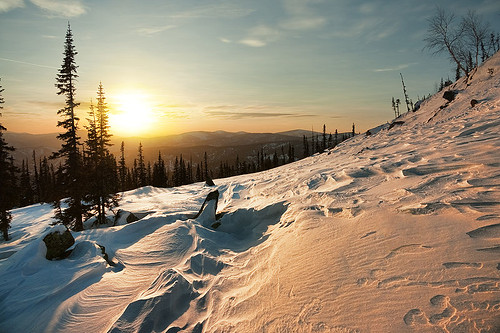
Photo by the Associated Press: Siberian permafrost traps carbon in its frozen soil that will add to the carbon emission concern.
Nathan Crites-Herren
The Paw Print
Scientists are warning that the world is on the verge of reaching critical thresholds where damage from global warming will become irreversible at a conference entitled “Planet under Pressure,” meeting in London through the week of March 26.
One scientist called this “the critical decade” for curbing global warming, saying the tipping point for irreversible damage to polar ice sheets has probably already been passed. Estimates from scientists vary but all agree that the temperature of the world is set to rise by 6 degrees Celsius by 2100 if greenhouse gasses continue to rise at their current rate.
Speaking at recent conference in London, Will Steffen, executive director of the Australian National University’s climate change institute said, “This is the critical decade. If we don’t get the curves turned around this decade we will cross those lines.”
From industrial nations the response has been slow to the greenhouse admission issue. A new global climate treaty forcing the world’s biggest polluters, such as the United States and China, to curb emissions will only be agreed on by 2015 – to enter into force in 2020.
“We are on the cusp of some big changes,” said Steffen. “We can … cap temperature rise at two degrees, or cross the threshold beyond which the system shifts to a much hotter state.”
According to environmental scientists, greenhouse admissions have already played a role in the decreasing West Antarctic ice sheet, which has been shrinking over the last decade and the Greenland ice sheet which has lost around 200 cubic km (48 cubic miles) a year since the 1990s.
Various climate studies agree that in addition to the reduction of the polar ice sheets, greenhouse gas emission have helped the Amazon rainforest to continually dry, causing mass tree deaths. Steffen and other scientists fear that this continual drop in moisture could speed up the time it takes to reach the tipping point, by turning the rainforest from an emission store house to an emissions releaser.
“Around 1.6 billion tons of carbon was lost in 2005 from the rainforest and 2.2 billion tons in 2010, which has undone about 10 years of carbon sink activity,” said Steffen.
Of particular concern to scientists is the widely unknown Siberian permafrost, which stores frozen carbon emissions under the soil away from the atmosphere. According to Steffen, there is about 1,600 billion tons of carbon there, about twice the amount in the atmosphere today, and the northern high latitudes are experiencing the most severe temperature change of any part of the planet.
Outlining the worst-case scenario, Steffen explained that 30 to 63 billion tons of carbon a year could be released by 2040, rising to 232 to 380 billion tons by 2100. This compares to around 10 billion tons of CO2 released by fossil fuel use each year.
Solutions to the rise in greenhouse gasses discussed at the conference included working to eradicate coal-fired power plants and implementing stronger programs for alternatives to fossil fuels. London School of Economics professor Anthony Giddens favors focusing on the fossil fuel industry, seeing as renewables only make up 1 percent of the global energy mix. “We have enormous inertia within the world economy and should make much more effort to close down coal-fired power stations,” he said
Oil tycoon Royal Dutch Shell expressed interest in creating technologies that would lead to negative emissions in the long run, like carbon capture on biomass and in land use, said Jeremy Bentham, the firm’s vice president of global business environment.
What’s Been Said…